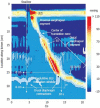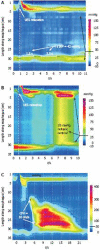New technologies in the gastrointestinal clinic and research: impedance and high-resolution manometry
- PMID: 19132761
- PMCID: PMC2653303
- DOI: 10.3748/wjg.15.131
New technologies in the gastrointestinal clinic and research: impedance and high-resolution manometry
Abstract
The last five years have been an exciting time in the study of esophageal motor disorders due to the recent advances in esophageal function testing. New technologies have emerged, such as intraluminal impedance, while conventional techniques, such as manometry, have enjoyed many improvements due to advances in transducer technology, computerization and graphic data presentation. While these techniques provide more detailed information regarding esophageal function, our understanding of whether they can improve our ability to diagnose and treat patients more effectively is evolving. These techniques are also excellent research tools and they have added substantially to our understanding of esophageal motor function in dysphagia. This review describes the potential benefits that these new technologies may have over conventional techniques for the evaluation of dysphagia.
Figures




References
-
- Nayar DS, Khandwala F, Achkar E, Shay SS, Richter JE, Falk GW, Soffer EE, Vaezi MF. Esophageal manometry: assessment of interpreter consistency. Clin Gastroenterol Hepatol. 2005;3:218–224. - PubMed
-
- Fass J, Silny J, Braun J, Heindrichs U, Dreuw B, Schumpelick V, Rau G. Measuring esophageal motility with a new intraluminal impedance device. First clinical results in reflux patients. Scand J Gastroenterol. 1994;29:693–702. - PubMed
-
- Nguyen HN, Silny J, Albers D, Roeb E, Gartung C, Rau G, Matern S. Dynamics of esophageal bolus transport in healthy subjects studied using multiple intraluminal impedancometry. Am J Physiol. 1997;273:G958–G964. - PubMed
-
- Srinivasan R, Vela MF, Katz PO, Tutuian R, Castell JA, Castell DO. Esophageal function testing using multichannel intraluminal impedance. Am J Physiol Gastrointest Liver Physiol. 2001;280:G457–G462. - PubMed
Publication types
MeSH terms
Grants and funding
LinkOut - more resources
Full Text Sources
Medical

